
Vietnamese instruments, deeply rooted in the country's rich cultural tapestry, reflect a diverse musical heritage. We will delve further into the world of Vietnamese instruments, exploring their origins, designs, and the melodies they contribute to Vietnamese culture. If you are ever on a Vietnam travel, make sure to see and listen to them play.
1. The history and significance of Vietnamese instruments
The history of Vietnamese instruments is a captivating journey, reflecting the nation's cultural richness and resilience. Over the course of Vietnam's narrative, a diverse array of traditional musical instruments has been cultivated. This collection is not merely an assortment; it encapsulates the essence of Vietnamese people.
These Vietnamese instruments bear witness to the creativity of local artisans, who have crafted unique instruments with distinct indigenous features. Simultaneously, Vietnam's musical landscape has embraced instruments from diverse origins, skillfully adapting them to the nation's musical language. This process of indigenization transforms imported instruments into authentic expressions of Vietnamese identity.
In total, the Vietnamese musical treasury boasts hundreds of different instruments, each contributing to the rich tapestry of the country's musical heritage. Whether born from native ingenuity or influenced by external sources, these Vietnamese instruments serve as cultural ambassadors, embodying the harmonious blend of tradition and adaptation that defines Vietnamese music.
2. The 3 main types of Vietnamese instruments
2.1. Vietnamese string instruments
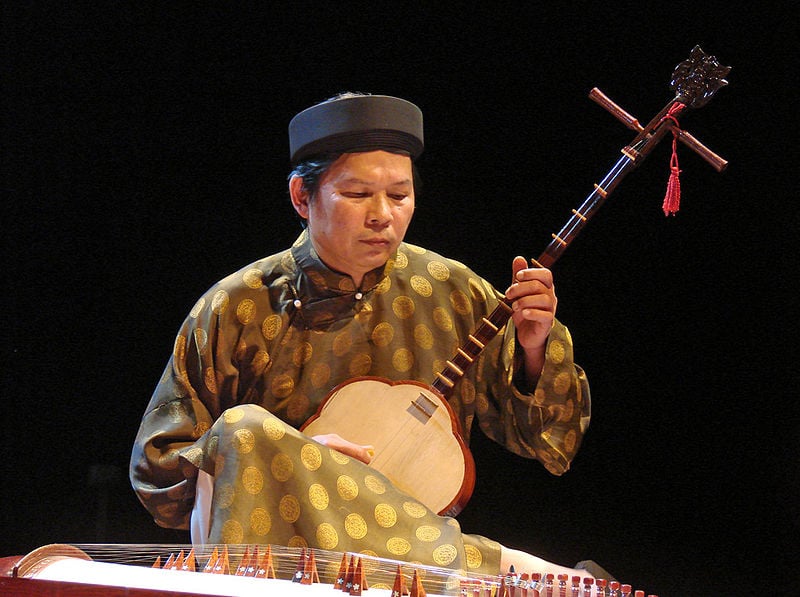
Vietnamese string instruments constitute a significant category within the nation's musical landscape. These Vietnamese instruments, characterized by their strings stretched across resonant bodies, play a pivotal role in creating the melodic tapestry of Vietnamese folk music. Notable examples include the dan bầu and the dan tranh, each contributing distinct tonalities to the rich musical heritage.
2.2. Vietnamese wind instruments
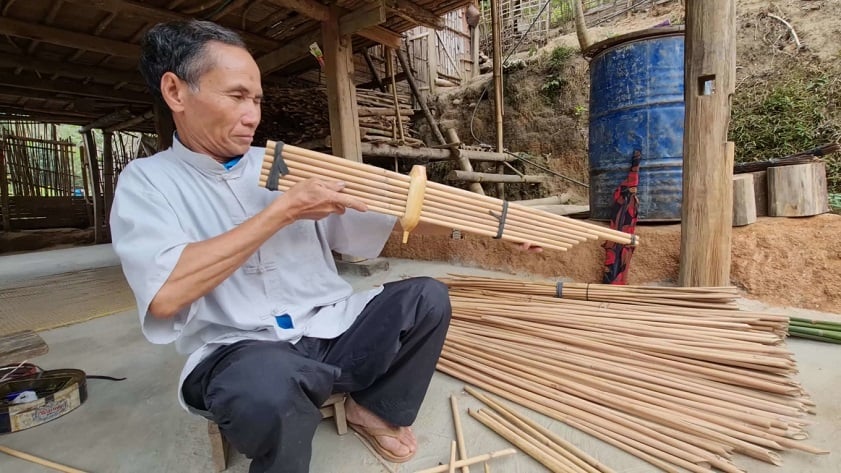
In the realm of Vietnamese music, wind instruments hold a prominent position, adding a breath of life to traditional melodies. These Vietnamese instruments, such as the sáo and the kèn, employ skillful techniques to produce soulful sounds. The interplay of tones and nuances from Vietnamese wind instruments enriches the auditory experience, offering a unique dimension to the country's musical expressions.
2.3. Vietnamese percussion instruments

Percussion instruments form a dynamic and essential component of Vietnamese musical traditions. Ranging from the delicate rhythm of wooden percussion like the trống chầu to the resonant beats of the trống đồng, Vietnamese percussion instruments contribute to the rhythmic foundation of various musical genres. The diverse array of percussive elements reflects the rhythmic diversity inherent in Vietnamese music, providing a captivating auditory experience.
>>> Explore: Vietnamese folk songs: BEST picks from all traditional music genres
3. Details of the 10 most popular Vietnamese instruments
3.1. Vietnamese moon-shaped lute (Dan nguyet)
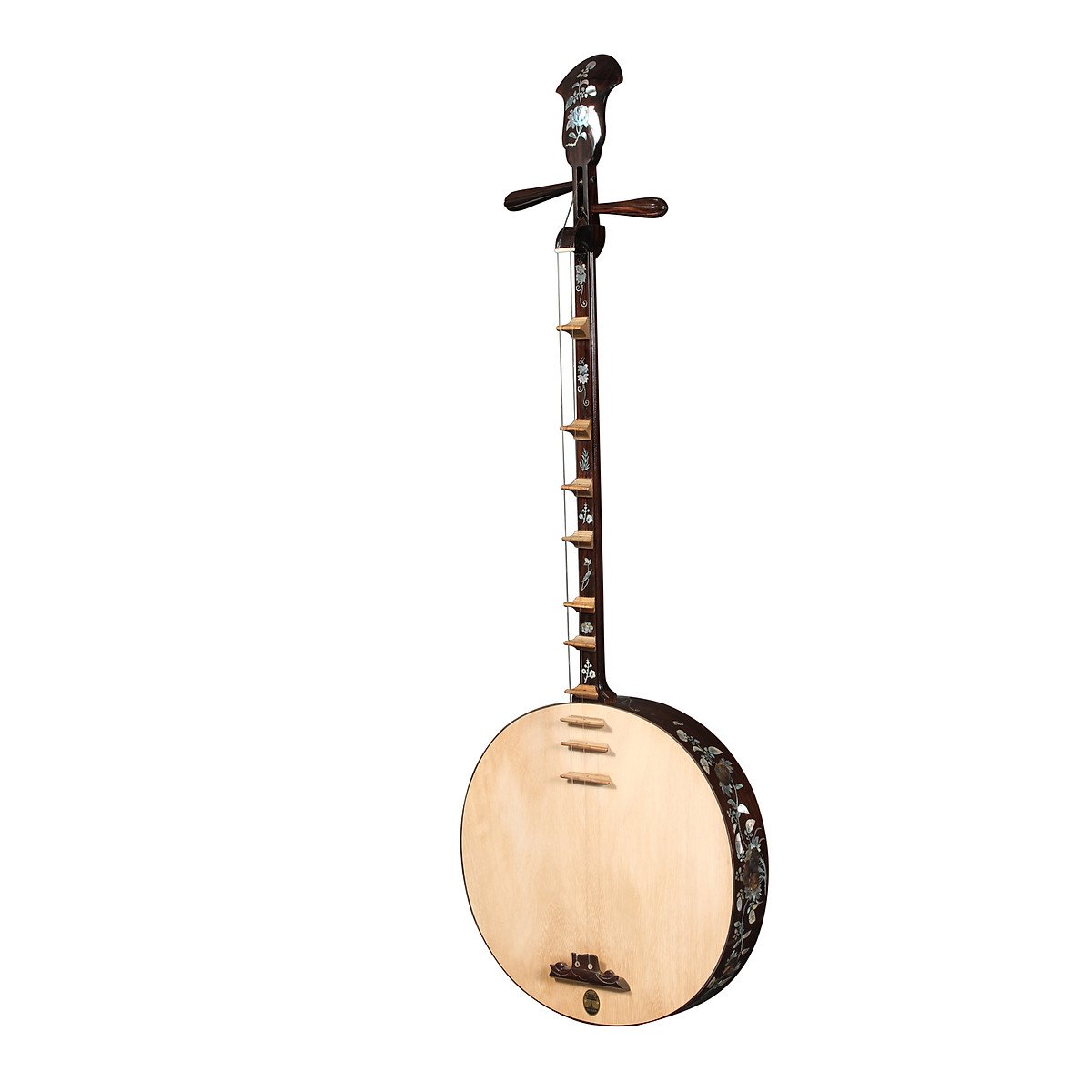
The dan nguyet, also known as the moon-shaped lute, is a musical instrument widely used in the court music genre. Originating and flourishing in the 11th century, it remains an essential instrument in Vietnamese music to this day. Characterized by its long neck and high frets, the dan nguyet is capable of producing soft, nuanced sounds. The instrument's tones resonate with a vibrant quality, alternating between deep and resonant and high-pitched and crisp. This versatility makes the dan nguyet suitable for ensemble performances, ceremonial music, and traditional singing.
3.2. Vietnamese monochord (Dan bau)
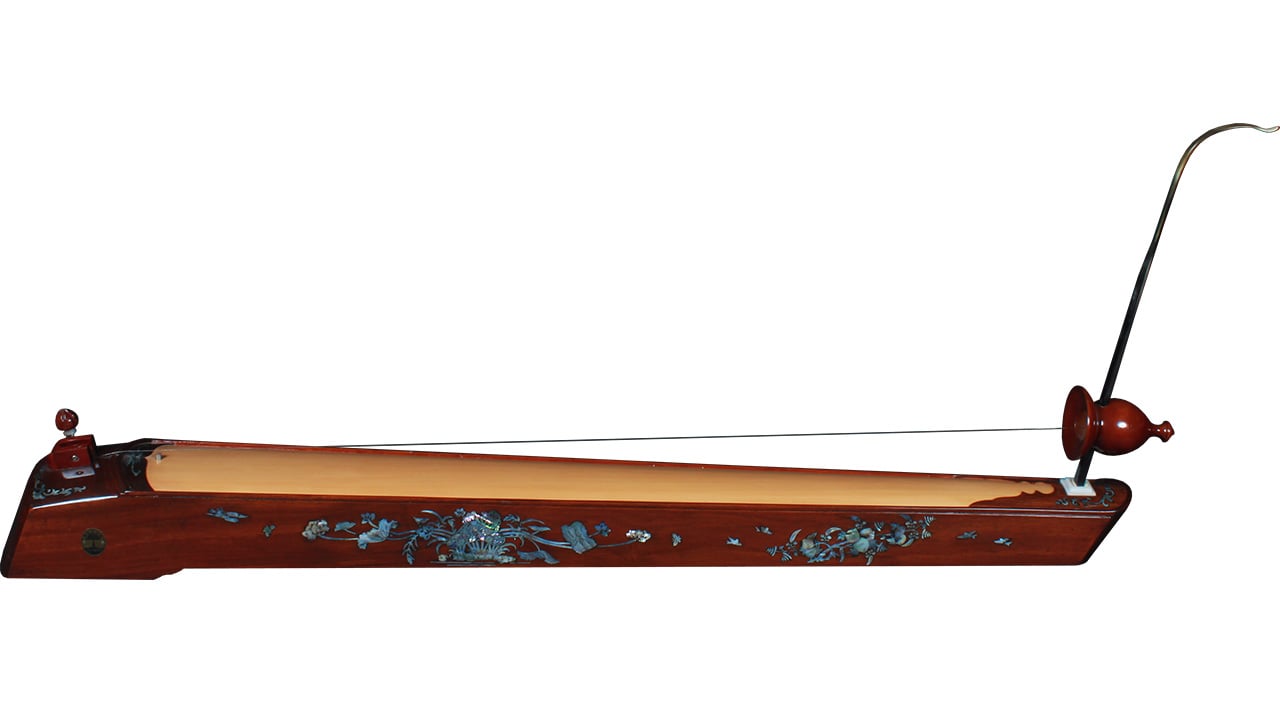
The dan bau is a traditional musical gem that features a solitary string running along its body. Sound is coaxed out by deftly using a pick or plectrum. Structurally, it falls into two categories: the bamboo-bodied dan bau and the wooden-box dan bau. The bamboo-bodied variant, embraced in Xam singing, has a body made of a lengthy bamboo piece about 120 centimeters in length. The upper part of the bamboo is hollowed to shape the instrument. The wooden-box version is a later and more refined iteration. It is preferred by adept players and available in various sizes within the wooden resonator category.
3.3. Vietnamese two-chord fiddle (Dan nhi)
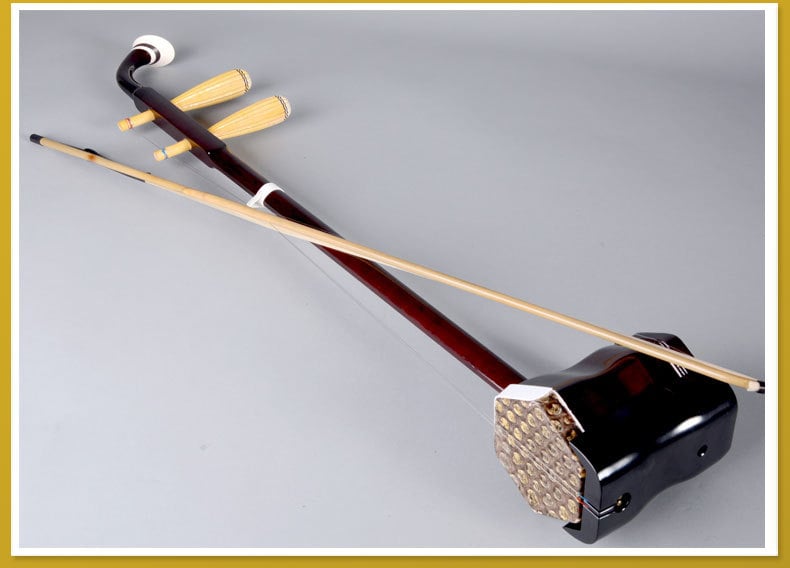
The dan nhi, part of the bowed string family with its distinctive arched bow, earns its name from having two strings. This instrument has roots in India, making its way to China as early as the 1st century and eventually landing in Vietnam during the 10th century. While commonly known as dan nhi, different ethnic groups in Vietnam have their unique names for this instrument. Among the Kinh people, it is called "liu" or "nhi liu." The Muong people refer to it as "Co ke," and down South, it goes by "Don co." The appearance, size, and materials used to craft the dan nhị can vary a bit based on the ethnic group employing it.
3.4. Vietnamese four-chord lute (Dan ty ba)

Considered a classic string instrument in Vietnam, the dan ty ba has historical roots in China, known as the PiPA, and in Japan as the BiWa. Typically spanning 95 to 100 centimeters, this instrument boasts a lightweight and untreated wooden face. The lower part, where the strings are attached, goes by the name ngua dan. Intricately carved, the dan ty ba's resonator showcases detailed craftsmanship, and its head is fitted with four wooden pegs for string tuning. Traditionally strung with silk, contemporary dan ty ba instruments often feature nylon strings.
3.5. Vietnamese zither (Dan tam thap luc)
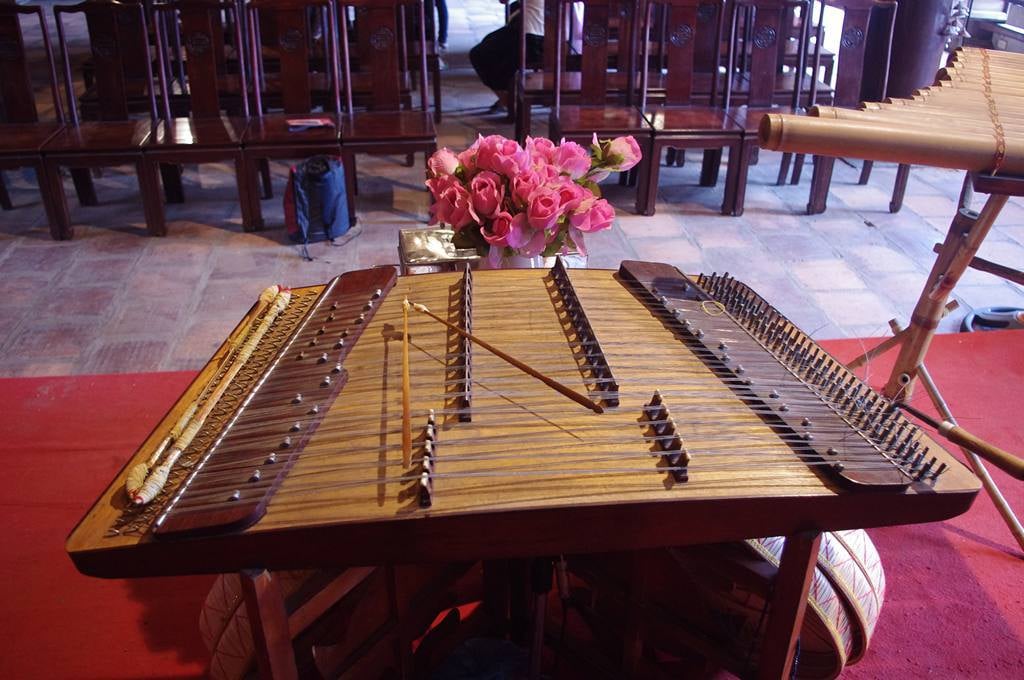
This is an instrument with 36 strings that originated from a Persian nation known as Santur around the 12th century. It made its way to Vietnam in the 1960s and gradually became a traditional Vietnamese musical instrument. The dan tam thap luc holds a significant role in stage musical performances, particularly in cheo and cai luong. It can accompany vocals, perform solos, and contribute to comprehensive ethnic orchestra ensembles. Some artists have innovated this instrument by adding more strings to produce a broader range of tones, including the half-tones. The purpose of this enhancement is to facilitate the playing of musical pieces with intricate modulations. Despite exceeding 36 strings, it is still commonly referred to as the dan tam thap luc.
3.6. Vietnamese plucked lute (Dan day)
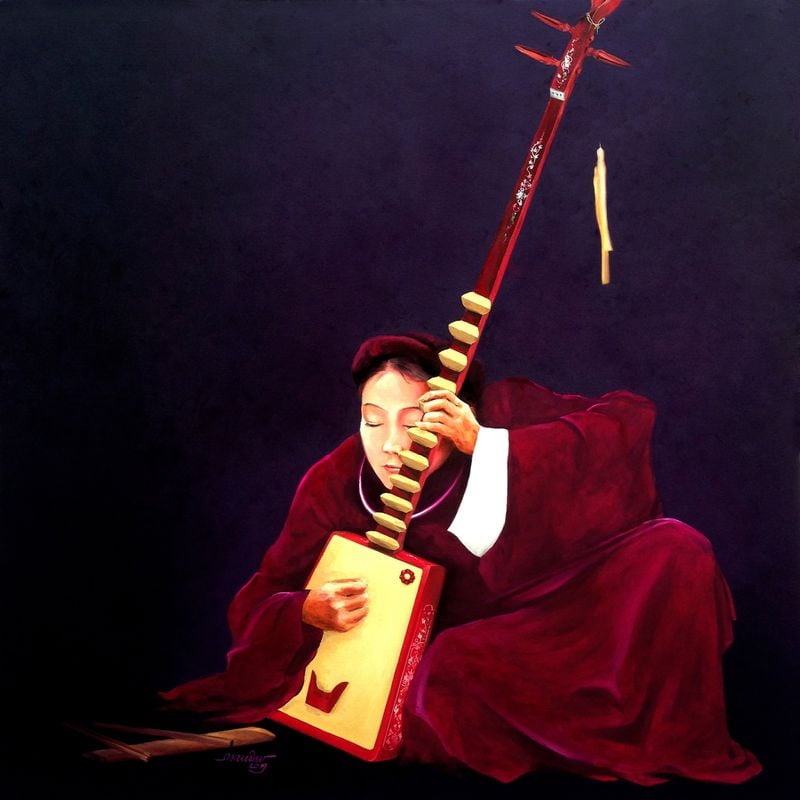
Featuring 3 strings, an elongated handle, and a sizable hole at the back of the soundbox, the dan day comprises four key components: the body, the neck, the head, and the strings. With a broad range spanning over 2 octaves, this instrument produces a warm and sweet timbre, allowing it to convey profound emotions. Its mellow yet succinct sound also offers a contrast that accentuates the voices of singers accompanying the instrument. Historically, the dan day served as the accompanying instrument for two traditional arts: Cua Dinh singing and A Dao singing. In contemporary times, it has found a new role in complementing poem recitals.
3.7. Vietnamese lithophone (Dan da)
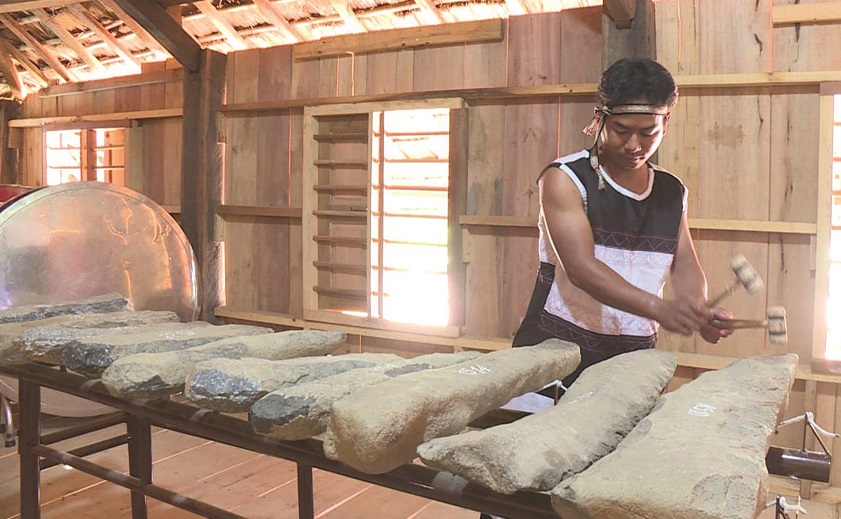
The dan da is Vietnam's most ancient percussion instrument and one of humanity's oldest musical instruments. According to historical records, the most ancient dan da is believed to have a history spanning over 3,000 years. Crafted from stone bars with varying lengths, thicknesses, and dimensions, the long, large, and thick rock bars produce low-pitched tones, while the short, small, and thin rock bars emit softer sounds. During performances, artists employ two small hammers to strike the stone bars, creating clear and melodious sounds. From these stone bars, the resonant echoes of the Central Highlands' mighty voice persist through the ages.
3.8. Khen
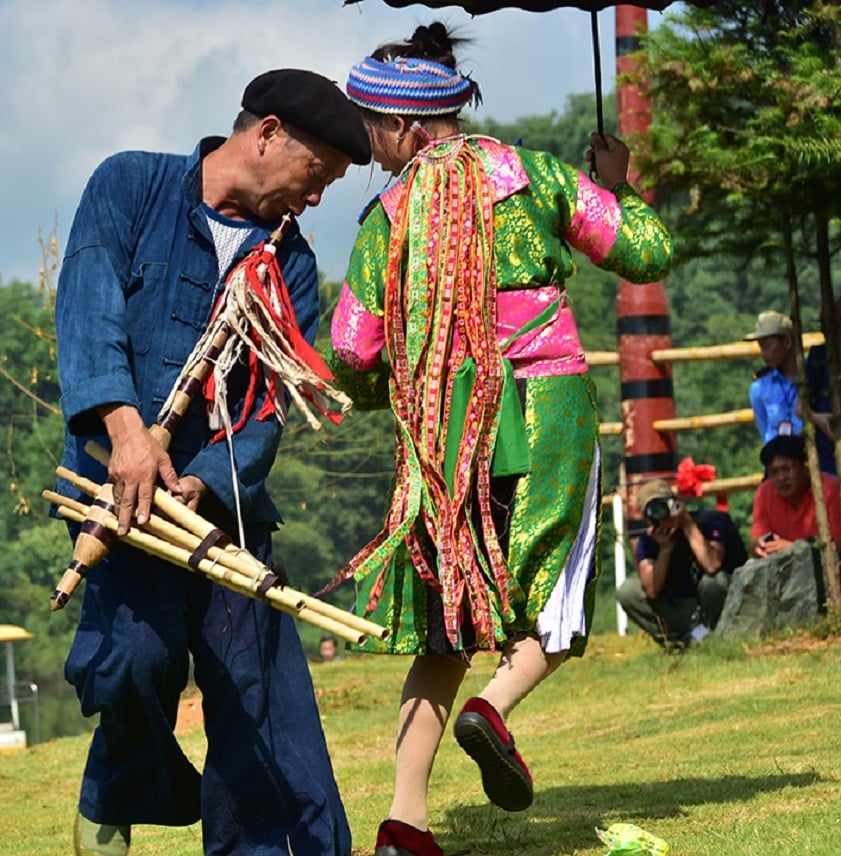
Belonging to the family of wind instruments, the khen boasts a complex structure with multiple tubes arranged in proximity. One end traverses a banana-shaped gourd to create a resonant chamber. The khen produces a delicate tone with each tube emitting a distinct timbre. Inside the tubes, thin reeds crafted from copper or silver contribute to the instrument's unique sound. Functioning as a polyphonic instrument, the khen covers an expansive range of approximately 1.5 octaves. It serves a dual role as both a musical instrument and a tool, acting as a conduit for community bonding and the shared expression of feelings. Additionally, the khen contributes to the elevation of cultural themes with an optimistic spirit that cherishes life.
3.9. T’Rung (Dan T’Rung)
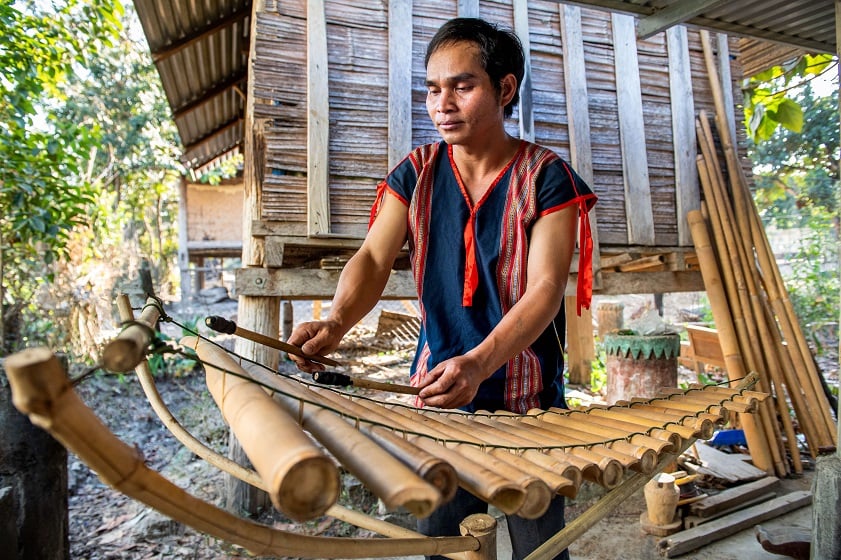
The T’Rung, or dan T’Rung, is an ethnic musical instrument originating from the Central Highlands of Vietnam. As an idiophone, it consists of 5 to 7 hollow tubes of varying lengths, creating distinct tones. Some professional T’Rung instruments feature 12 to 16 tubes arranged in rows on the instrument. These tubes are connected by two parallel strings, forming the instrument's structure. When played, the musician strikes the tubes with two fabric-covered mallets. The T’Rung has a wide tonal range of up to 3 octaves and 8 notes. It can produce overlapping or unison tones, but two notes must be at least an octave apart. Shorter tubes emit high tones, while longer ones produce deeper tones.
3.10. Vietnamese gongs (Cong chieng)

Gongs, prevalent across nearly all ethnic communities in Vietnam, trace their roots back to the Dong Son brass culture. Inextricably linked with the Central Highlands, gongs hold an indispensable role in the spiritual essence of the people. The musical heritage of gongs in Vietnam's Central Highlands is a recognized artistic treasure. They are meticulously cast from a copper alloy blend containing tin and lead. The version with a knob is referred to as the cong, while the knob-less variant is known as the chieng. The tonal quality follows a simple principle: larger gongs produce deeper sounds, while smaller ones resonate with higher tones.
3.11. Bamboo flute (Sao truc)

The bamboo flute, also known as the sao truc, is a wind instrument deeply ingrained in the folk music traditions of Vietnamese people. From antiquity to the present day, the image of the bamboo flute has been intertwined with Vietnamese culture. Typically crafted from bamboo or reed, the flute has a diameter of 1.5 centimeters and a length of 30 centimeters. The pipe's body is carved with a primary aperture and features either 6 or 10 musical openings. The sao truc has the capability to convey a myriad of emotional nuances, spanning an extensive range of over two octaves.
3.12. Vietnamese drum (Trong com)
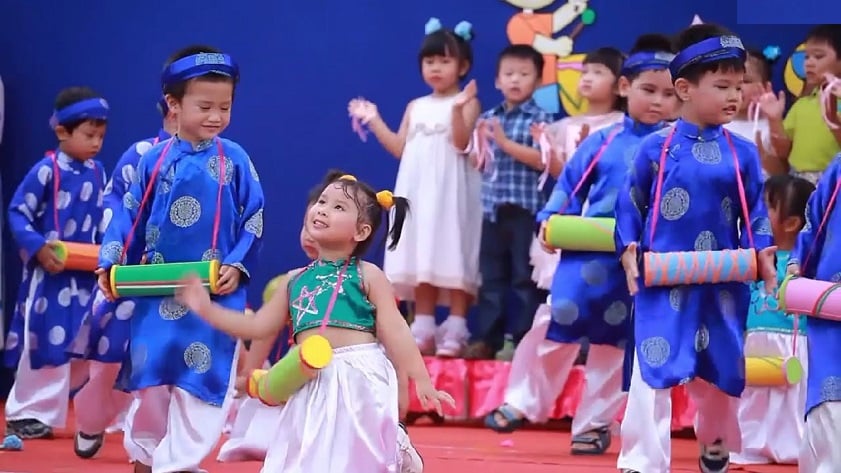
The trong com, or "rice drum," is a traditional Vietnamese drum shaped like a bongo. Its intriguing name stems from the practice of adjusting the drum's sound pitch by applying hot rice mash to its surface before playing. Typically crafted from a hollowed piece of wood measuring around 56-60 centimeters in length, the drum features buffalo skin covering both ends. A lattice system of leather or rattan strings spans the drum to fine-tune the sounds on both sides. Serving as an integral orchestral instrument, the trong com finds its place in ceremonial customs and cheo orchestras, producing a resonant, deep, and slightly opaque sound.
>>> Discover: 23+ of the most popular songs in Vietnam that are huge national hits
Vietnamese instruments are like cultural ambassadors, weaving a rich tapestry that echoes the nation's historical and artistic heritage. From the ancient echoes of the gongs in the Central Highlands to the innovative tunes of the dan ty ba, these instruments encapsulate the soul of Vietnam, serving as vessels of cultural expression and connection.
To explore these Vietnamese instruments firsthand, you can visit any traditional theater or cultural festival in Hanoi, Ho Chi Minh City, Phu Quoc, Nha Trang, Hoi An, Ha Long, etc. In these destinations, you can stay at Vinpearl’s hotels and resorts, where luxury meets comfort. Vinpearl offers a selection of luxurious rooms and amenities like swimming pools, spas, gyms, restaurants, and bars.

For entertainment, you can check out VinWonders. From thrilling rides to lively shows, there is no shortage of activities to keep you engaged and create unforgettable memories at VinWonders.
>>> Don't forget to book rooms in Vinpearl Phu Quoc, Vinpearl Nha Trang, Vinpearl Resort & Golf Nam Hoi An, Vinpearl Resort & Spa Ha Long in advance!
























